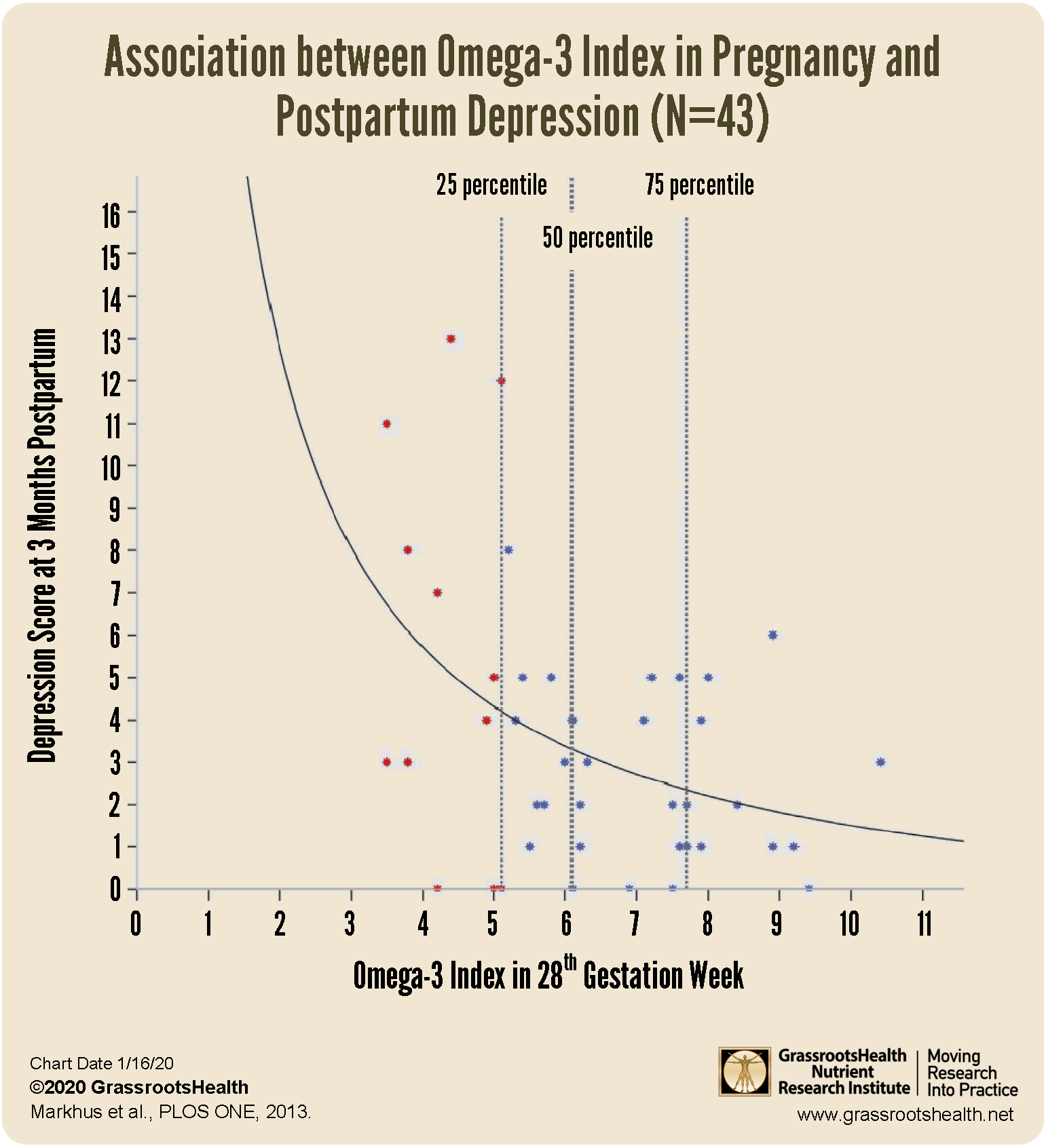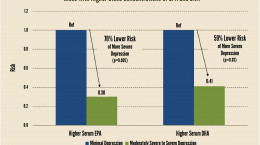Published on January 24, 2020
 According to the National Institute of Mental Health, postpartum depression affects between 7-13 percent of all mothers. Postpartum depression can occur between a few weeks after birth, all the way until a year after birth. It is characterized as a condition which does not allow the mother to successfully accomplish daily tasks.
According to the National Institute of Mental Health, postpartum depression affects between 7-13 percent of all mothers. Postpartum depression can occur between a few weeks after birth, all the way until a year after birth. It is characterized as a condition which does not allow the mother to successfully accomplish daily tasks.
One scientific way to measure postpartum depression is through the Edinburgh Postnatal Depression Scale (EPDS) with scores ranging from 0-30. A value of greater than or equal to ten usually equates to having postpartum depression.
Measure Omega-3 Index Levels
In a study by Markhus et al., researchers measured Omega-3 Index levels (the same measurement provided in D*action+Omega-3) and found a direct correlation between index levels and postpartum depression. The study was done in Norway, using women from a single community. This was not a trial – no supplements were given. Instead, Omega-3 Index levels were measured at 28 weeks gestation and then the women were assessed using the EPDS scale three months after delivery.
What Did They Find?
Below is the scatter plot of data from the study. During analysis, they determined that the best fit line was not linear, but a curve as shown in the chart below. Overall, only 6.9% of the women in the study had EPDS values of 10 or higher – but you can see that the higher the Omega-3 Index, the lower the EPDS score. This paper describes a ‘bend’ in the curve at an Omega-3 Index around 5%, in others words, that is the point you want to be above to reduce the risk of postpartum depression. An Omega-3 Index of almost 8% was associated with an even greater risk reduction, and has also been associated with the greatest improvement in cardiovascular health, cognitive health, and healthy aging.
Higher Seafood Consumption, Lower Rates of Postpartum Depression
For this study, no supplements were given, but information on seafood consumption and dietary supplements was collected. The average frequency of a seafood dinner was 1.2 times a week, seafood spread on bread 1.1 times a week, and taking an omega-3 supplement 4.9 times a week. Total seafood and omega-3 supplement intake was significantly associated with Omega-3 Index. The association found between Omega-3 Index and postpartum depression (seen in the chart above) was similar to that found in previous research on seafood consumption and postpartum depression in which the greater the average seafood consumption by country was associated with lower average postpartum depression scores (using the EPDS scale).
A Healthy Omega-3 Index is Necessary for All Stages of Life – What is Yours?
Make sure you know your Omega-3 Index (target of at least 8%) and your vitamin D level (target of 40-60 ng/ml or 100-150 nmol/L), and are taking daily steps to keep both within range. Through GrassrootsHealth Nutrient Research Institute, you can also test your essential elements magnesium, copper, zinc and selenium, toxins such as lead, mercury and cadmium, as well as your inflammation levels and thyroid stimulating hormone (TSH) level. Find out your levels today! Log on to the test selection page (click the link below) to get your tests and see for yourself if your levels can be improved.
Make sure you track your results before and after, about every 6 months!
How can I track my nutrient intake and levels over time?
To help you track your supplement use and nutrient levels, GrassrootsHealth has created an online tracking system called myData-myAnswers. For each specific supplement, you can track what days you take it, how much, and many other details. This will help you know your true supplemental intake and what patterns of use work for you to reach and maintain optimum nutrient levels. Check it out today!







